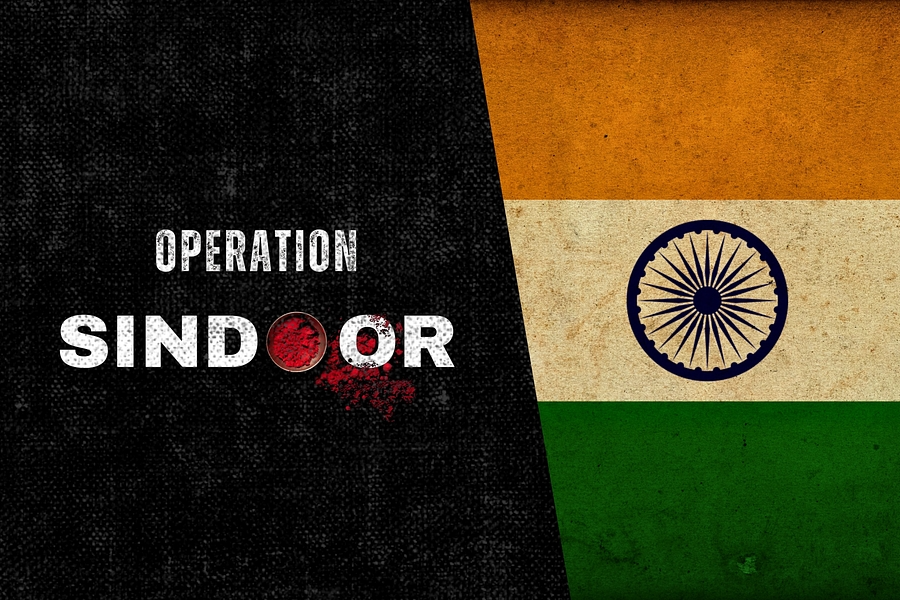September 09th Current Affairs
Zelensky condemns 'ruthless attack' after Russia hits main government building in Kyiv
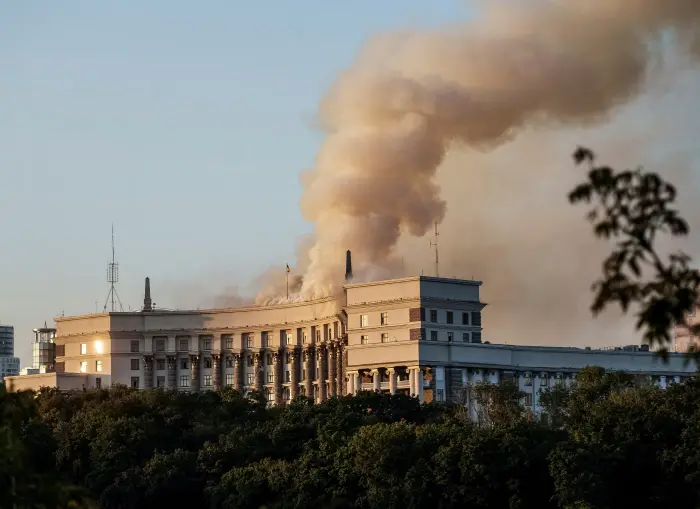
Relevance to UPSC
GS Paper II: International Relations, Security, Conflict, Diplomacy
- Hybrid warfare & drones → challenge conventional defense systems.
- Symbolic targeting of government HQs undermines morale and governance.
- Rhetoric vs. response → global protests but limited concrete action.
- Crisis diplomacy → use of diplomat tours to rally international backing.
GS Paper III: Internal Security, Defence, Technology & Infrastructure
- Air defense criticality → exposes Ukraine’s military vulnerabilities.
- Defence modernization need → countering mass drone warfare.
- Urban resilience → strikes highlight risks to infrastructure & civilian safety.
GS Paper IV: Humanitarian Impact, Ethics & Social Dimensions
- Ethics of warfare → civilian targeting raises moral dilemmas.
- Human cost → deaths, incl. mother & infant, underscore duty to protect dignity.
More About the News
- Massive assault (Sept 7–8, 2025): Russia launched its biggest aerial strike since 2022, using 800+ drones & 13 missiles.
- Kyiv govt hit: Cabinet of Ministers building set ablaze — first direct strike on Ukraine’s governance hub.
- Civilian toll: At least 4 killed (incl. mother & infant); dozens injured in residential areas.
- Defense strain: Ukraine intercepted 750+ projectiles, but overwhelmed by attack scale.
- Zelenskyy’s response: Called it a “deliberate crime”, blamed Russia for prolonging war.
- U.S. stance: President Trump hinted at harsher sanctions on Russia.
- European reaction: France, UK, others strongly condemned strikes; urged global unity.
- Diplomatic push: Ukraine took 60 diplomats to damaged Cabinet building to highlight war’s impact.
Russia - Ukraine War
The Russia-Ukrainian conflict began with the 2014 Crimea annexation and escalated into a full-scale invasion by Russia in February 2022, producing massive humanitarian, legal and strategic consequences. The war has reshaped European security, accelerated shifts in energy and food markets, and tested international law and institutions. Its trajectory continues to influence global geopolitics, defence doctrines and economic stability.
Background of the War
- 2014 flashpoint: Annexation of Crimea and the rise of separatist conflict in Donbas — created the long-term Russo-Ukrainian faultline (example: Crimea annexation).
- Frozen/low-intensity phase: 2014–2021 saw periodic clashes, Minsk talks and stalemate — set the stage for later escalation.
- Full-scale invasion (2022): Russia launched a large-scale cross-border invasion in Feb 2022, changing the conflict into open war.
- Legal escalation: Ukraine took cases to international courts (ICJ) and the ICC opened investigations — legal contest beyond the battlefield.
- Prolonged war & adaptive tactics: War shifted to attritional, drone/long-range strikes and grinding frontlines — accompanied by sanctions, aid flows and global economic effects.
Causes of the War
- Geopolitical ambition & sphere of influence: Russia’s desire to prevent NATO/EU enlargement in its near abroad (example: rejection of Ukrainian westward tilt).
- Identity and historical narratives: Kremlin’s narrative of shared history and security claims over Ukraine (example: statements denying Ukrainian sovereignty).
- Security dilemma & NATO concerns: Perceived strategic encirclement and military considerations (example: Russian objections to NATO cooperation with Ukraine).
- Domestic politics & regime signalling: Use of external conflict to rally domestic support / divert attention (example: patriotic mobilisation narratives).
- Failure of diplomacy & deterrence: Breakdown of effective deterrence, insufficient preventive diplomacy (example: collapse of high-level negotiations before Feb 2022).
Impacts of the War
- Humanitarian catastrophe: Mass displacement and civilian casualties (example: millions of refugees to EU; high urban civilian tolls).
- Economic shocks & inflation: Disruption to energy, grain and fertilizer supplies causing global price volatility (example: wheat & fertilizer export disruptions).
- Energy security realignments: Europe diversifying away from Russian gas; new energy partnerships (example: accelerated LNG imports and pipeline politics).
- Military doctrine change: NATO defence posture strengthened; surge in defence spending (example: renewed force posture in Eastern Europe).
- International legal precedents: Activation of international courts and debates on accountability (example: ICJ provisional measures; ICC arrest warrants).
Challenges in Containing the War
- Asymmetry of interests: Russia seeks strategic gains that are hard to compromise on (example: territorial aims), making negotiated settlement difficult.
- Sanctions limits & adaptation: Sanctions hurt but are evaded/adapted to (example: “dark fleet” oil shipments; sanctions’ diminishing returns).
- Proxy & escalation risks: Risk of spillover or miscalculation with third-party states (example: incidents near NATO airspace).
- Fragmented international responses: Divergent positions (sanctioners vs. abstainers) reduce pressure for settlement (example: many abstentions in certain UN votes).
- Protracted battlefield dynamics: Entrenched frontlines and material exhaustion make decisive military victory unlikely (example: grinding attrition and long reconstruction needs).
Role of International Organisations
- United Nations (GA/UNSC): GA condemned aggression; Security Council often deadlocked due to vetoes.
- International Court of Justice (ICJ): Ordered provisional measures (Mar 2022) in Ukraine’s genocide allegations case — symbolically important but limited in enforcement.
- International Criminal Court (ICC): Investigations and arrest warrants (e.g., March 2023) aim to deter/hold individuals accountable—practical limits without custody.
- EU & NATO: Provided military, financial and diplomatic support to Ukraine; strengthened collective defence in Europe.
- Financial institutions/World Bank/IMF: Offer reconstruction planning and emergency financing (example: multi-billion RDNA and recovery assessments)
Legal Developments
- ICJ (Ukraine v. Russia): Ordered provisional measures in March 2022, including suspension of military operations pending full hearing (enforceability limited).
- ICC: Issued arrest warrants (March 2023) for senior Russian officials including Vladimir Putin and Maria Lvova-Belova on alleged war crimes related to deportation of children; implementation depends on state cooperation.
Way Forward
- Sustain calibrated support for Ukraine (defence, economic, humanitarian) while avoiding direct great-power confrontation.
- Enhance sanctions enforcement & multilateral coordination to reduce evasion.
- Strengthen international legal mechanisms and documentation for future accountability and reparations.
- Invest in resilience & reconstruction planning (RDNA frameworks).
- Revive diplomacy with clear red lines & incentives for phased de-escalation and local ceasefires leading to talks.
Impacts on India
- Energy & trade realignment: India increased purchases of discounted Russian oil (example: higher crude imports; new trade routes).
- Food & fertilizer supplies: Disruptions in global grain/fertilizer markets affected Indian commodity markets and policy buffers (example: wheat & fertilizer price/availability concerns).
- Strategic balancing: India’s ties with both Russia (defence) and Western countries influenced a calibrated diplomatic stance (example: continuing defence cooperation while engaging with Western partners).
- Multilateral diplomacy: India’s voting/abstention patterns in UN votes reflect independent balancing (example: abstentions or nuanced positions in GA/UN votes).
- Economic opportunities & risks: Short-term gains from bargain energy purchases but long-term risks from secondary sanctions and supply-chain shifts (example: trade surge with Russia vs. pressure from sanctioning states).
India’s Stance
Principled neutrality with strategic hedging: India has called for respect for sovereignty and dialogue while maintaining longstanding defence and energy ties with Russia and deepening relations with the West. (Reflects balancing of national interests and strategic autonomy.)
India’s Stance
- Diversify energy sources & boost domestic production to reduce external vulnerabilities.
- Use diplomatic capital to advocate de-escalation and humanitarian access.
- Harmonise trade strategy to avoid secondary sanction risks while protecting national interests.
- Strengthen supply-chain resilience (food & fertiliser).
The Russia–Ukraine war has reshaped global security, trade networks, and debates on international law, with long-term effects on reconstruction, deterrence, and geopolitics. A sustainable resolution demands support for Ukraine, stronger multilateral mechanisms against evasion, and renewed diplomacy combining security guarantees with gradual de-escalation. For India and other middle powers, the conflict highlights the importance of strategic autonomy, economic resilience, and proactive multilateral engagement.
Prelims MCQ
Q. Which of the following international legal actions arose directly from Russia’s 2022 invasion of Ukraine? 1. The International Court of Justice directed Russia to suspend military operations in a provisional measures order. 2. The International Criminal Court issued arrest warrants for Russian leaders on alleged war crimes. 3. The UN Security Council unanimously authorized collective military action against Russia under Chapter VII. Select the correct answer using the code below:
A. 1 and 2 only
B. 2 and 3 only
C. 1 only
D. 1, 2 and 3
Mains Question
Q. “The Russia–Ukraine war has exposed the limits of sanctions, the adaptability of modern warfare and the weaknesses of existing international enforcement mechanisms. Analyse these assertions and suggest a comprehensive multilateral strategy to enhance crisis containment and post-conflict reconstruction.”
World seeks stable, predictable environment for trade & investment, says EAM at BRICS summit
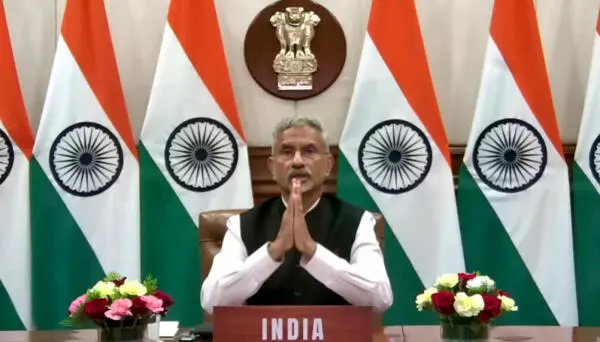
Relevance to UPSC
GS Paper II: International Relations / Global Governance
- Trade Diplomacy & Multilateralism: Highlights India’s emphasis on global trade stability and equitable engagement through BRICS.
- South-South cooperation: Showcases efforts to strengthen intra-GLOBAL South coordination (BRICS) as an alternative to protectionist blocs.
- Strategic posture: Reflects India’s nuanced diplomacy—balancing critique of protectionism while advocating rules-based engagement.
GS Paper III: Economy / Infrastructure
- Supply chain resilience: Emphasizing shorter, redundant chains aligns with India’s economic strategies in manufacturing competitiveness and self-reliance.
- Counteracting economic fragmentation: The call for cooperation addresses contemporary challenges of global supply shocks and tariff wars.
More About the News
- Stability in trade: EAM Jaishankar urged creation of a predictable global trade and investment climate amid tariff tensions.
- Fair practices: He called for open, transparent, and non-discriminatory trade, cautioning against politicizing trade policies.
- Cooperative approach: Stressed constructive multilateralism and building resilient, diversified supply chains.
- BRICS role: Brazil’s President Lula denounced “tariff blackmail” and pushed for stronger BRICS economic integration.
BRICS
BRICS – an acronym for Brazil, Russia, India, China, and South Africa—emerged in the 2000s as a coalition of major emerging economies seeking reform in global governance and equitable representation. Over time, it has evolved from an economic grouping into a geopolitical platform shaping debates on trade, development finance, technology, and multipolarity in global order.
Evolution & Background of BRICS
- 2001: Term “BRIC” coined by Goldman Sachs economist Jim O’Neill.
- 2006: First meeting of BRIC Foreign Ministers on UNGA sidelines.
- 2009: First BRIC summit (Yekaterinburg, Russia).
- 2010: South Africa joined → BRIC became BRICS.
- 2014: Establishment of New Development Bank (NDB) and Contingent Reserve Arrangement (CRA) at Fortaleza Summit.
- 2023–24: Expansion debates; BRICS invited new members (Saudi Arabia, UAE, Egypt, Iran, Ethiopia).
Key Trends of BRICS
- Expansion of membership and outreach beyond original five.
- Rising economic weight—contributes ~32% of global GDP (PPP).
- Increasing focus on financial institutions (NDB, CRA).
- Push for de-dollarisation and alternative payment systems.
- Greater role in shaping climate, tech, and AI governance.
Members & Observers of BRICS
- Members (2025): Brazil, Russia, India, China, South Africa, Saudi Arabia, UAE, Egypt, Iran, Ethiopia. (The last 5 countries are new entrants)
- Observers/Outreach partners: Countries like Argentina, Indonesia, Bangladesh, Kazakhstan, and others often invited to BRICS+ meetings.
Impacts of BRICS
- Financial architecture reform: Creation of NDB challenged Western-dominated IMF/World Bank system.
- Trade facilitation: Intra-BRICS trade (e.g., India-China trade despite tensions) sustains global supply chains.
- Geopolitical balancing: Provides a counterweight to G7 dominance (e.g., BRICS joint stance on multipolarity).
- Technology cooperation: Focus on digital economy and AI ethics (e.g., BRICS Innovation Network).
- South-South cooperation: Development aid and capacity building (e.g., BRICS Vaccine R&D Centre).
Challenges
- Internal divergences: India-China border tensions weaken cohesion.
- Geopolitical alignments: Russia-China closeness vs. India’s ties with US-led QUAD.
- Economic disparities: China’s dominance (~70% of BRICS GDP) skews influence.
- Expansion dilemmas: New members may dilute focus (e.g., Iran’s inclusion may polarize).
- Institutional limits: NDB lending smaller compared to IMF/World Bank.
Role of India in BRICS
- Advocate for reformed multilateralism and Global South voice.
- Host of 2016 BRICS Summit (Goa)—pushed counter-terrorism agenda.
- Promotes digital public infrastructure and fintech models.
- Acts as a bridge between Western democracies and BRICS bloc.
Impacts on India
- Economic opportunity: NDB loans for Indian infrastructure (e.g., renewable energy projects).
- Strategic leverage: BRICS provides India a counterbalance to Western forums.
- Diplomatic space: Platform to highlight concerns like terrorism.
- Technology cooperation: Access to joint research initiatives.
- Geopolitical dilemmas: Managing China’s dominance and Russia-China nexus.
Initiatives Taken by BRICS
- New Development Bank (NDB)
- Contingent Reserve Arrangement (CRA)
- BRICS Energy Research Platform
- BRICS Counter-Terrorism Strategy
- BRICS Academic Forum & Think Tank Council
Way Forward for BRICS
- Enhance institutional depth of NDB and CRA.
- Promote sustainable development & green finance.
- Balance geopolitical divides through issue-based cooperation.
- Expand BRICS+ framework with clear membership criteria.
- Champion digital economy, AI governance & resilient supply chains.
BRICS is no longer just an economic acronym but a geopolitical force shaping multipolarity. Its future hinges on resolving internal contradictions, deepening institutional capacity, and championing inclusive global governance. For India, BRICS offers both opportunities and strategic dilemmas—navigating these with pragmatic diplomacy will be key to ensuring its leadership in the evolving world order.
Prelims MCQ
Q. Which of the following correctly reflects institutional initiatives under BRICS? 1. New Development Bank is headquartered in Shanghai. 2. Contingent Reserve Arrangement provides liquidity support during balance-of-payments crises. 3. BRICS Counter-Terrorism Strategy is a legally binding enforcement treaty.
A. 1 and 2 only
B. 2 and 3 only
C. 1 and 3 only
D. 1, 2, and 3
Mains Question
Q. “BRICS is evolving from an economic grouping into a geopolitical actor.” Critically analyze this transformation with reference to its opportunities and challenges for India.
Meta hiring contractors to build AI chatbots in Hindi with cultural nuances
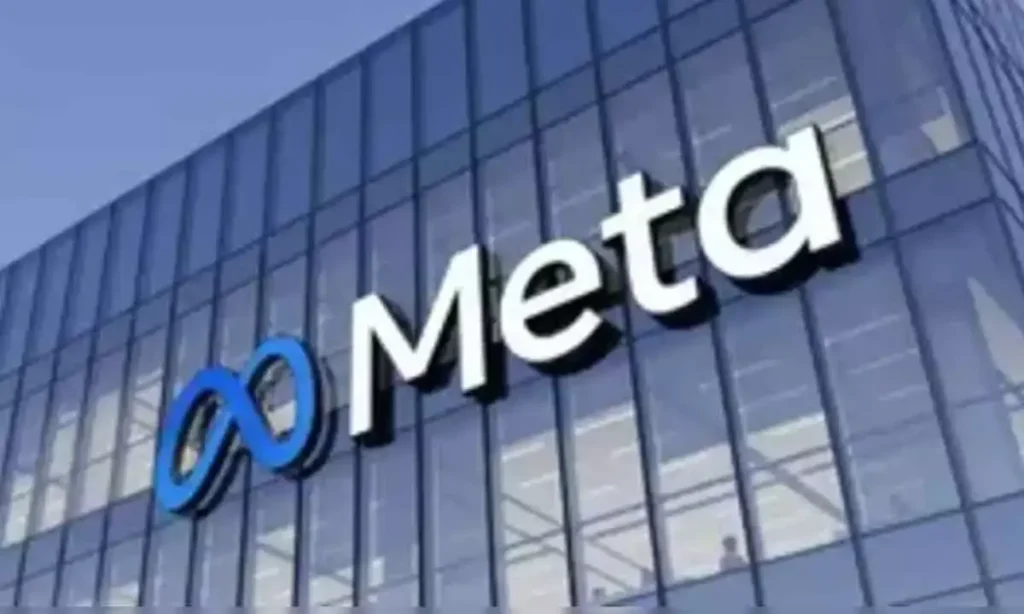
Relevance to UPSC
GS Paper III: Technology
- AI localization and governance: Illustrates the critical interplay between technological design and cultural context in AI deployment.
- Privacy and data protection: Raises questions about human involvement in AI systems, data exposure, and regulatory oversight.
- Ethical AI development: Highlights the need for robust safeguards, bias mitigation, and industry norms in AI persona creation.
GS Paper II: International Relations & Governance
- Global tech policy implications: Reflects the global nature of AI services and the complexities of cross-border hiring and regulation.
- Platform governance challenges: Offers a case study on non-state influence, corporate responsibility, and the limits of digital governance frameworks.
More About the News
- Cultural AI design: Meta is hiring US-based Hindi (and other language) experts at $55/hour (~₹4,800) to craft culturally nuanced chatbot personalities.
- Skillset needed: Applicants must have 6+ years’ experience in storytelling, character creation, prompt engineering, and AI content design.
- AI strategy: The project supports Meta’s plan to use role-based chatbots for greater engagement on WhatsApp, Instagram, and Messenger.
- Ethical concerns: Critics warn of bias, misinformation, and privacy risks, as contractors may access sensitive user interactions.
Glocalisation
Glocalisation combines globalisation and localisation—adapting global products, services, or practices to fit local cultural, social, or economic contexts. Coined in Japanese business practice (dochakuka) in the 1980s and popularised in sociology by Roland Robertson, it reflects the reality that global and local forces increasingly intersect rather than oppose each other.
Evolution & Background
- 1980s (Japan): Origin as a business strategy—adapting farming techniques to local conditions.
- 1990s: Adopted in marketing & sociology (Robertson, 1995: “global-local nexus”).
- 2000s: MNCs integrated glocalisation into brand strategies (McDonald’s, Coca-Cola).
- 2020s: Digital platforms and AI-driven markets (e.g., Netflix’s regional content) showcase glocalisation 2.0.
Key Trends
- Hybridisation of culture: Blending global brands with local tastes.
- Digital glocalisation: AI, e-commerce, OTT tailoring content regionally.
- Policy frameworks: Countries promoting glocal strategies (e.g., “Make in India, Serve the World”).
- Corporate strategies: FMCG, food, and entertainment industries heavily adopting.
- Consumer demand: Rising preference for “global quality, local relevance.”
Impacts of Glocalisation
- Cultural integration: Bollywood-Hollywood collaborations (e.g., “Slumdog Millionaire”).
- Economic growth: Starbucks India adapting menu with masala chai boosts local market.
- Innovation: Toyota customising cars for Indian road conditions.
- Social acceptance: Localised OTT shows (Netflix’s Sacred Games).
- Political soft power: Yoga Day promoted globally but tailored locally.
Advantages of Glocalisation
- Market expansion: McDonald’s India (McAloo Tikki) widens customer base.
- Employment generation: Local sourcing by global firms (IKEA sourcing from Indian artisans).
- Resilience: Localised supply chains reduce global shocks (e.g., COVID-19 PPE adaptation).
- Cultural preservation: Promotes local traditions via global platforms (YouTube regional creators).
- Consumer satisfaction: Global brand credibility with local relevance (Coca-Cola regional campaigns).
Challenges of Glocalisation
- Cultural homogenisation risk: Hollywood dominance influencing local cinema.
- Unequal benefits: Local SMEs sidelined by MNC-local hybrids.
- Regulatory hurdles: Amazon facing FDI e-commerce restrictions in India.
- Quality dilution: Over-localisation (Nestlé’s Maggi controversies in India).
- Ethical dilemmas: Facebook algorithms amplifying local misinformation.
Initiatives Taken
- India: Make in India, Digital India, Vocal for Local with global outreach.
- Global: UNDP support for localised SDG implementation; WTO facilitating fair trade with cultural sensitivity.
Best Practices
- Global:
- McDonald’s Japan (Teriyaki Burger).
- Netflix Korea (Squid Game as a global cultural product).
- India:
- Amul adapting campaigns with local idioms while being globally recognised.
- Zomato customizing menus and UI for Indian languages.
Way Forward
- Promote AI-driven localisation without cultural distortion.
- Build resilient local supply chains for global competitiveness.
- Encourage SMEs in glocal trade platforms.
- Strengthen data & content regulation to avoid misinformation.
- Foster inclusive cultural diplomacy through global platforms.
Glocalisation symbolises the fusion of global reach and local roots, turning diversity into a strength. Going forward, balancing inclusivity, ethical practices, and innovation will ensure that glocalisation not only drives growth but also safeguards cultural identity. For India, it is a pathway to harmonise its civilisational heritage with aspirations of global leadership.
Prelims MCQ
Q. With reference to Glocalisation, consider the following statements:
1. It originated in Japanese business practice before being adopted in sociology.
2. It refers to adapting global goods/services to local contexts.
3. It always leads to cultural homogenisation.
A. 1 and 2 only
B. 2 and 3 only
C. 1 and 3 only
D. 1, 2 and 3
Originated in Japan, means global adaptation to local needs. It may cause homogenisation risks but not “always.”
Mains Question
Q. “Glocalisation reflects the interplay between global integration and local identity.” Critically analyse its significance for India’s socio-economic development.
Bangladesh to export 1,200 tonnes of hilsa to India, half of last year's quota
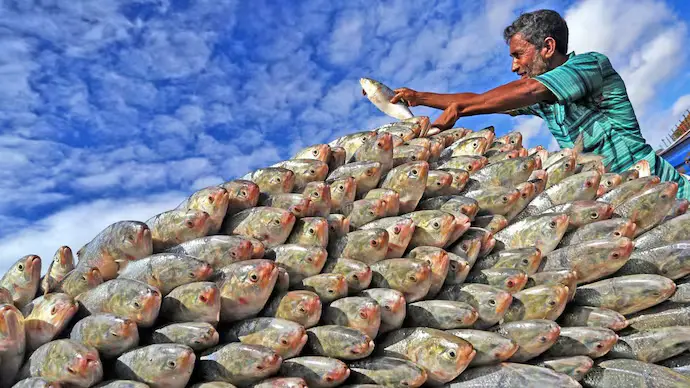
Relevance to UPSC
GS Paper II: International Relations & Cultural Diplomacy
- Soft-power diplomacy: The Hilsa trade exemplifies diplomatic subtlety—cultural leitmotif strengthening bilateral ties during festivals.
- Bilateral trade and trust-building: Strategic trade moves like this reflect how cultural commodities can pave pathways for broader, non-contentious cooperation.
GS Paper III: Economy, Trade & Resource Management
- Export control & resource governance: Bangladesh’s price floor and quota system highlight measures to secure domestic supply and manage resource scarcity.
- Supply chain adaptation: India’s pivot towards domestic sourcing illustrates resilience and adaptive strategies in international trade disruption.
More about the News
- Reduced export quota: Bangladesh approved 1,200 tonnes of Hilsa for India during Durga Puja — half of last year’s 2,420 tonnes.
- Minimum price set: A floor price of ₹1,100/kg (~USD 12.5) has been fixed to safeguard domestic markets.
- Hilsa diplomacy: The move reflects a symbolic goodwill gesture, reinforcing Indo-Bangladesh cultural and diplomatic ties.
- Domestic boost: Gujarat’s Bharuch region is expanding Hilsa supply using modern fishing and cold chain facilities to offset reduced imports.
India - Bangladesh Relations
India and Bangladesh share deep historical, cultural, linguistic, and geographical ties since Bangladesh’s liberation in 1971 with Indian support. Over the decades, the relationship has evolved from political solidarity to multi-dimensional cooperation in trade, connectivity, security, and people-to-people exchanges. Yet, challenges in water sharing, border management, and political trust persist.
Evolution of Relations
- 1971: India’s role in Bangladesh Liberation War; recognition as an independent state.
- 1972: Treaty of Friendship, Cooperation and Peace signed.
- 1996: Ganga Water Treaty on water-sharing.
- 2010s onwards: Renewed focus on connectivity, security cooperation, and energy trade.
- 2020s: Emphasis on digital, cultural, and economic integration (e.g., trans-shipment, riverine connectivity, energy grids).
Key Trends
- Shift from political to economic partnership.
- Sub-regional cooperation (BBIN, BIMSTEC).
- Emphasis on connectivity projects (rail, inland waterways).
- Growing energy trade and grid integration.
- Cultural diplomacy through shared festivals, linguistic ties, and symbolic gestures (e.g., Hilsa diplomacy).
Strengths in the Relations
- Strategic & security cooperation – Joint action against insurgent groups in Northeast India (e.g., crackdown on ULFA bases in Bangladesh).
- Economic interdependence – Bilateral trade crossed USD 18 billion in 2021–22, India is Bangladesh’s second-largest trading partner.
- Connectivity revival – Resumption of pre-1965 rail links; Maitree Express and bus services boost mobility.
- Energy cooperation – India exports over 1,100 MW electricity to Bangladesh; joint ventures in renewable energy.
- Cultural affinity – Language (Bengali heritage), shared festivals (Durga Puja), and gestures like Hilsa exports sustain goodwill.
Weaknesses in the Relations
- Trade imbalance – India’s exports far outweigh Bangladesh’s, creating friction.
- Water disputes – Teesta water-sharing remains unresolved despite multiple rounds of talks.
- Border management – Smuggling, human trafficking, and killings along the border raise tensions.
- Perceived big brother syndrome – Sections in Bangladesh perceive Indian policies as overbearing.
- Limited market access – Non-tariff barriers restrict Bangladesh’s exports to India despite SAFTA provisions.
Challenges in the Relations
- Geopolitical competition – China’s infrastructure investments in Bangladesh challenge India’s influence.
- Climate change – Rising sea levels and riverine disputes create stress (e.g., Brahmaputra basin).
- Illegal migration – Concerns in Indian states like Assam about undocumented migrants.
- Energy and resource needs – Balancing growing energy demand while ensuring equitable distribution.
- Political shifts – Regime changes in Dhaka may alter the trajectory of bilateral ties.
Initiatives Taken Together
- BBIN Motor Vehicle Agreement for seamless transport.
- BIMSTEC & SAARC cooperation on regional connectivity.
- Bangladesh-Bhutan-India-Nepal energy corridor.
- Line of Credit (LOC): India extended USD 8 billion+ credit lines to Bangladesh for infrastructure.
- Border Haats: Localized trade hubs along borders to support communities.
Way Forward
- Conclude Teesta water-sharing agreement.
- Promote balanced trade with greater market access for Bangladesh.
- Strengthen climate resilience partnerships.
- Enhance counter-terrorism and cyber cooperation.
- Deepen people-to-people ties through tourism, cultural exchanges, and education partnerships.
India–Bangladesh relations are among the most successful examples of South Asian cooperation, but unresolved disputes and external pressures could test this partnership. The future lies in institutionalizing mechanisms for equitable resource sharing, fostering balanced trade, and jointly addressing regional challenges like climate change.
Prelims MCQ
Q.
Which of the following correctly reflects recent India–Bangladesh cooperation?
1. Maitree Express is a bus service between Kolkata and Dhaka.
2. India exports over 1,000 MW of electricity to Bangladesh.
3. The Teesta water-sharing agreement was signed in 2011 and is currently operational.
A. 2 only
B. 1 and 2 only
C. 1 and 3 only
D. 2 and 3 only
Maitree Express is a train, not a bus. Teesta agreement was not signed due to political hurdles. Only statement 2 is correct.
Mains Question
Q. “India–Bangladesh relations are a test case for the success of India’s Neighborhood First Policy.” Discuss the strengths and challenges of this relationship while suggesting a roadmap for a stable future.
For upcoming caste census in Karnataka, Veerashaiva Lingayats to pick ‘Others’ under religion column
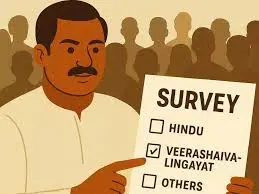
Relevance to UPSC
GS Paper I (Society) & GS Paper II (Governance & Social Justice)
- Identity politics & self-representation: Raises questions about how communities navigate identity assertion and its implications for inclusion and recognition in India’s socio-political fabric.
- Data-driven affirmative action: Highlights the critical role of accurate enumeration in shaping reservation policies and equitable resource distribution.
- Secularism and plural recognition: Reflects the justice challenge in balancing freedom of religion with societal uniformity—especially when sub-communities seek recognition beyond dominant categories.
GS Paper II (Governance) & GS Paper I (Constitutional Provisions)
- Census as a policy tool: Underscores the importance of census data integrity for formulating targeted welfare and development programs.
- Constitutional dimensions: The demand aligns with constitutional guarantees under Article 25 (freedom of religion) and the state’s duty to identify marginalised groups for affirmative action.
More about the News
- Religious identity: Veerashaiva-Lingayat Mahasabha urges members to mark “Others” in religion and specify “Veerashaiva-Lingayat” for distinct recognition.
- Caste details: Members advised to record as Veerashaiva, Lingayat, or Veerashaiva-Lingayat, with sub-caste specifics for better socio-economic mapping.
- Correcting past gaps: Move seeks to address earlier merging with Hindus, which led to undercounting and misrepresentation in welfare benefits.
- Community mobilization: Local teams guiding households to ensure accurate census entries for fair reservation and welfare policies.
Caste Census
Caste census refers to the systematic collection of socio-economic and demographic data based on caste and community groups. Historically conducted alongside decennial censuses, it serves as a tool for policy formulation, affirmative action, and social equity. A well-executed caste census can reveal inequalities, aid targeted welfare, and strengthen inclusive governance.
Evolution of Caste Census in India
- 1871: First census by British included caste classification, mostly for administrative control.
- 1931: Last complete caste enumeration before independence.
- 1951 onwards: Only Scheduled Castes (SCs) and Scheduled Tribes (STs) enumerated; caste census discontinued due to political sensitivities.
- 2011: National Sample Survey included socio-economic caste data for SC/ST/OBC estimates.
- 2021–2025: States like Karnataka, Rajasthan, and Tamil Nadu conducted state-level caste surveys; renewed calls for national-level caste census.
Advantages of Caste Census
- Informed policy-making: Enables targeted welfare schemes like scholarships for backward classes.
- Equitable representation: Helps political reservation allocation in local bodies (e.g., OBC/SC/ST quotas).
- Socio-economic mapping: Reveals community-specific poverty and education gaps, guiding inclusive growth.
- Resource allocation: Directs government funds for marginalized groups (e.g., MNREGA benefits).
- Conflict mitigation: Reduces social tension by evidencing inequalities and preventing arbitrary allocation of benefits.
Impacts of Caste Census
- Empowerment of marginalized groups: SC/ST/OBC can demand rightful access to education, jobs, and land rights.
- Data-driven affirmative action: Adjusts reservation percentages based on actual population share.
- Socio-political reforms: Highlights regions or communities needing special development packages.
- Strengthens democracy: Ensures fair political representation and community participation.
- Economic planning: Helps in micro-targeting schemes like skill development programs for backward castes.
Challenges in Caste Census
- Political sensitivity: Fears of vote-bank politics and backlash from dominant communities.
- Data accuracy: Respondents may misreport caste for benefits or social prestige.
- Administrative burden: Requires massive manpower and digital infrastructure.
- Privacy concerns: Risk of misuse of caste data by non-state actors.
- Social divisiveness: Can fuel identity politics if poorly managed or publicised.
Initiatives Taken
- State-level surveys: Karnataka (2022), Rajasthan, Tamil Nadu; Karnataka included Veerashaiva-Lingayat distinctions.
- National initiatives: NSSO socio-economic caste surveys; OBC population estimation studies.
- Digital integration: Online platforms for data collection and verification to improve accuracy and speed.
Best Practices
- Global:
- UK Ethnic Group Census (2011): Included self-identified ethnic and cultural groups for policy and anti-discrimination measures.
- South Africa’s Post-Apartheid Surveys: Monitored inequality and informed Black Economic Empowerment policies.
- India:
- Karnataka Caste Survey (2022): State-level socio-economic data with granular caste details.
- Rajasthan Socio-Economic Survey: Data-driven approach for backward caste empowerment and targeted welfare.
Way Forward
- Conduct a national caste census with clear objectives and privacy safeguards.
- Use digital tools to enhance accuracy and reduce misreporting.
- Ensure data transparency while preventing misuse.
- Integrate findings into education, employment, and health policy planning.
- Build awareness to reduce stigma and encourage community participation.
Caste census is a vital instrument for inclusive governance and social justice. With careful planning, technological integration, and sensitivity to political and social contexts, it can guide India toward equitable development. The future lies in using caste data to balance historical inequities while fostering national unity.
Prelims MCQ
Q. Consider the following statements regarding caste census in India:
1. The last nationwide caste census was conducted in 1931.
2. Only SCs and STs were enumerated after 1951.
3. State-level caste surveys are constitutionally mandatory.
A. 1 and 2 only
B. 2 and 3 only
C. 1 and 3 only
D. 1, 2 and 3
Last full census with caste data was 1931; post-independence, only SC/ST enumerated. State-level surveys are optional, not mandated constitutionally.
Mains Question
Q. “Caste census is an essential tool for equitable development in India.” Examine the advantages, challenges, and policy implications of conducting a caste census at the national level.



